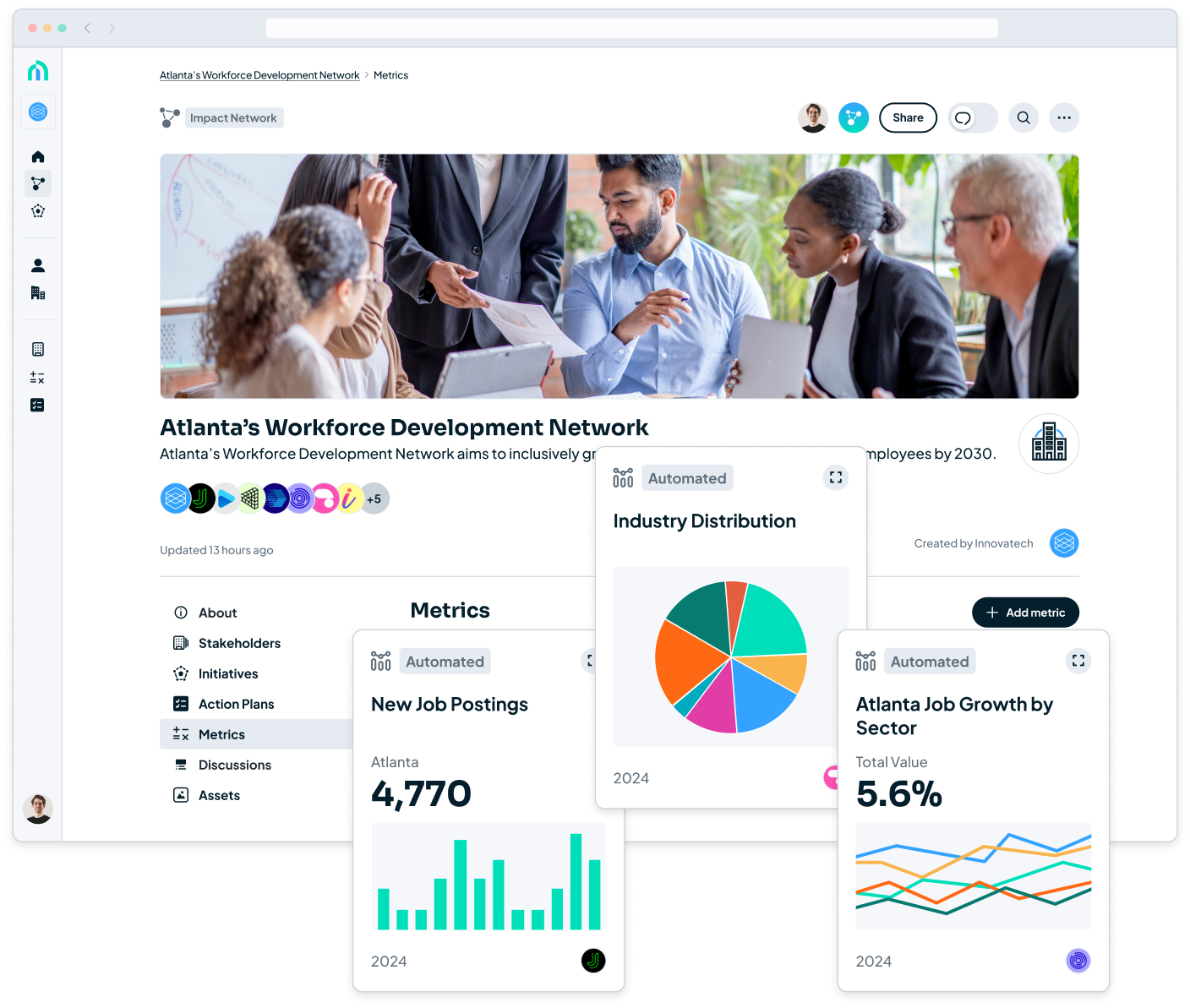Outcome Performance Measures
To define success and measure performance, businesses need to have outcome performance measures.
Outcome performance measures are a relatively new model for gauging a company’s success based on business goals. In the past, businesses tended to focus less on specific, measurable metrics and more on perceived success. Former methods often used behavior-based performance measures rather than outcome-based performance measures.
Both models of performance are widely used today and sometimes used simultaneously by the same companies. Both behavior-based and outcome-based performance measures are ways to assess goal achievement and determine impact. However, outcome performance measures are more objective while behavioral measures tend to be more subjective.
Two crucial aspects of performance measures are outputs and outcomes. What are project outcomes and outputs?
The performance outcome meaning is the final result a business wants to accomplish—essentially the measurable result. Some outcome-based performance measures examples include:
- Increase the number of qualified leads by 5% per month
- Improve customer NPS scores by 25%
- Hit $100,000 in sales per quarter
Then there is also the performance output meaning which encompasses the actions a business takes to achieve its goals. Teams may also refer to “outcomes” as deliverables, milestones, initiatives, etc. An example of performance output would be crafting a new marketing campaign that has a specific goal such as generating new leads or moving prospects to the next stage of the sales cycle.
Simply put, outcomes are the end result a business is looking to achieve and outputs are the actions you take to get there. Measuring outcomes and impact helps companies assess if they are on track to meet their goals. Furthermore, knowing how to measure outcomes of a program is essential for determining the value of business partnerships.
Outcome-Based Management
First, it’s important to understand the outcome-based management definition. Business outcome management (BOM) is the process of suppliers collaborating with customers to determine shared goals. By aligning around common goals from the beginning, vendors can demonstrate their worth to their customers throughout the entire customer relationship.
Traditionally, businesses focused on revenue as their top outcome performance measure. However, outcome-based work is about how vendors meet the end-goals of their buyers. It’s about how your product fulfills the needs of your customer or client.
Outcome-based performance management requires a new perspective for all aspects of the revenue cycle. Vendors must understand their customers’ needs in-depth so that they can help them be successful and meet their goals. However, in order to do this, both the supplier and buyer must communicate their mutual expectations and align on outcomes.
Based on the mutual goals set, both the supplier and buyer can use measurable outcomes in project management.The measurements used to assess performance depend on the specific outcomes agreed upon, and both parties should understand what data and metrics are necessary to track value creation and outcome achievement. Fortunately, there are a few helpful outcome measurement tools (Metaimpact included) to streamline the process.
While most outcome-based management focuses on profits in the private sector, organizations should also leverage outcome-based performance management. Organizations can use outcome-based performance measures to assess the effectiveness of government projects and ESG initiatives. In this scenario, the methods used to measure project performance are centered on core environmental and social goals.
It’s a great way for public-facing institutions to maintain accountability and effectiveness. For this reason, outcome-based performance management in the public sector is gaining traction.
To understand how this looks in practice, here are two performance outcomes examples from the Government of Western Australia’s Department of Transport and Department of Education.
Outcome Measurement Tools
Understanding how to measure outcomes of a project is crucial for determining its efficacy. Project managers use outcome measurement tools to collect quantitative data to understand their team’s performance.
There are many helpful measurable outcomes in project management. The key to adopting an outcomes-based approach is knowing how to measure the outcomes of a project. Luckily there are several tools and applications that suppliers and buyers can use to measure outcome achievement.
A few outcome measurement tools popular today include:
Product Analytics Tools
Product analytics tools are commonly used by software companies to measure their products’ impact. This is a popular method of measurement for user experience (UX) professionals who seek to understand and perfect how users interact with their products. Some helpful product analytics capabilities include automatic data capturing, detailed user segmentation, date-based data filtering, and more.
The problem with product analytics tools is that they traditionally focus on the side effects of value—user patterns, feature utilization, login activity, and the like—and do nothing to measure true impact.
Customer Activity Tools
Customer activity tools are designed to analyze customer data. Businesses commonly use these tools to better understand how current or potential buyers interact with their products over the customer lifecycle.
The challenge is that customer activity software has been built to serve the supplier—not to bring suppliers and buyers together to focus on the creation and delivery of value. If a supplier were to stop using a CRM or customer analytics platform, their customers would have no idea. Traditional tools offer little to no value to the very customers they were built to manage.
Metaimpact Enterprise Software
Although there are various other outcome measures in research, only one application tracks true value creation. Metaimpact has created the first-ever Business Value Network where companies go to manage their business relationships. Within the network, value can be defined and shared between organizations. Companies are able to connect with organizations both upstream and downstream in their value chain to align on expected outcomes and measure value delivery over time.
Outcome-Based Performance Measures Examples
Here are some performance outcome examples that provide more insight into how to prioritize value in your business relationships:
Customer Outcomes
The first area to consider is customer outcomes. If you’re a marketing automation provider selling to a retail company, a few outcome-based performance measures examples may include:
- Increase website conversion rates by 15%.
- Improve loyalty and engagement with valuable customer insights.
- Enhance the customer experience by empowering store associates.
Working toward these measurable goals helps keep the marketing automation provider on the right track, while at the same time giving the retail company a renewed sense of trust and accountability.
Vendor Outcomes
On the flip side of the equation, there are also outcome-based performance measures that buyers should put in place to evaluate vendors. For example, if you’ve recently invested in integrated cloud applications and platform services, a few performance outcome statements may include:
- Drive 10% cost savings with an all cloud approach.
- Simplify budget planning.
- Shorten the procurement process by 25%.
There are countless process measures examples that show how outcomes can be put at the center of business relationships.
Team Outcomes
While outcomes are most often used in relation to two businesses working together, team outcomes are another factor to consider. Within a company, every functional area is a critical component of that organization’s value delivery model. Unfortunately, the impact of specific teams and individuals is often overlooked or at the very least, severely under credited. Outcome-based performance measures can help overcome this obstacle.
Performance output measures examples for internal teams may include:
- Getting 90% of the sales team to hit or exceed their quarterly quota. This is a quantitative goal that will be a benchmark for team performance.
- Improve employee satisfaction ratings from 3 stars to 4 stars by the end of the year.
- Reduce the time it takes to onboard a new client from 4 hours to 2 hours.
- Reduce the absenteeism rate from 35% to 25%.
Most project managers want to outline performance measures in formal writing for clarity and recordkeeping. These are called outcome statements, and they help you judge progress and value acquisition. An example of performance outcome statements could be, “We have increased our email conversion rate by 26.3%, surpassing our intended goal of 25%.” A project success measures template is a helpful tool that the most effective structure, process outcome examples leverage.
Outcome-Based Metrics
For every performance outcome, there should be a metric to track its progression. Outcome-based metrics are quantifiable assessments that indicate the progress made toward the results. You can use outcome-based metrics to assess anything from performance output to job performance outcomes. In the latter, outcome-based metrics are helpful indicators of job performance outcomes because they are specific and concrete.
To identify the most useful outcome-based metrics, analyze what you are trying to accomplish and what data you need in order to measure success.
Here are three common outcome metrics examples for revenue teams:
- Conversion rate: What percentage of customers that visit your website end up making a purchase?
- Cost-per-acquisition: How much do you spend to acquire each new client?
- Delivery time: How long does it take for an order to be delivered after the order is placed? This is a critical outcome metric for logistics.
Outcome-Based Management Framework
To successfully adopt outcome performance measures, you need a framework. An outcome-based management framework defines your outcomes, ensures all parties are aligned, and tracks the delivery of outcomes over time. It defines how to measure success of a project and provides a streamlined system for doing so.
To leverage a helpful framework, you must first know how to write expected outcomes of a project. The most effective performance outcomes examples are specific, measurable, and relevant.
A quality framework involves a project success measures template that ensures suppliers and buyers are on the same page through the entirety of the partnership. The framework should outline the desired outcomes, action plans, and evaluation measures necessary for shared success. Organizations can leverage these frameworks internally, but also with vendors and customers alike.
Despite the importance of an outcome-based management framework, it can be difficult to know where to start. Metaimpact provides leading enterprise software to help suppliers and buyers align on expected outcomes and track outcome achievement over time.
Metaimpact is not a system that “is owned by” a single company. Rather, Metaimpact is a neutral, third-party network that any organization can join. All network members are equal and have full control over who they collaborate with and how their data is used and shared.
Within the network, companies are able to connect through Bridges—co-owned digital spaces where two or more organizations can come together to collaborate on outcomes of a project. Each Bridge ensures mutual accountability between partners and creates focus on the desired outcomes, action plans, and evaluation measures necessary to achieve shared success.








